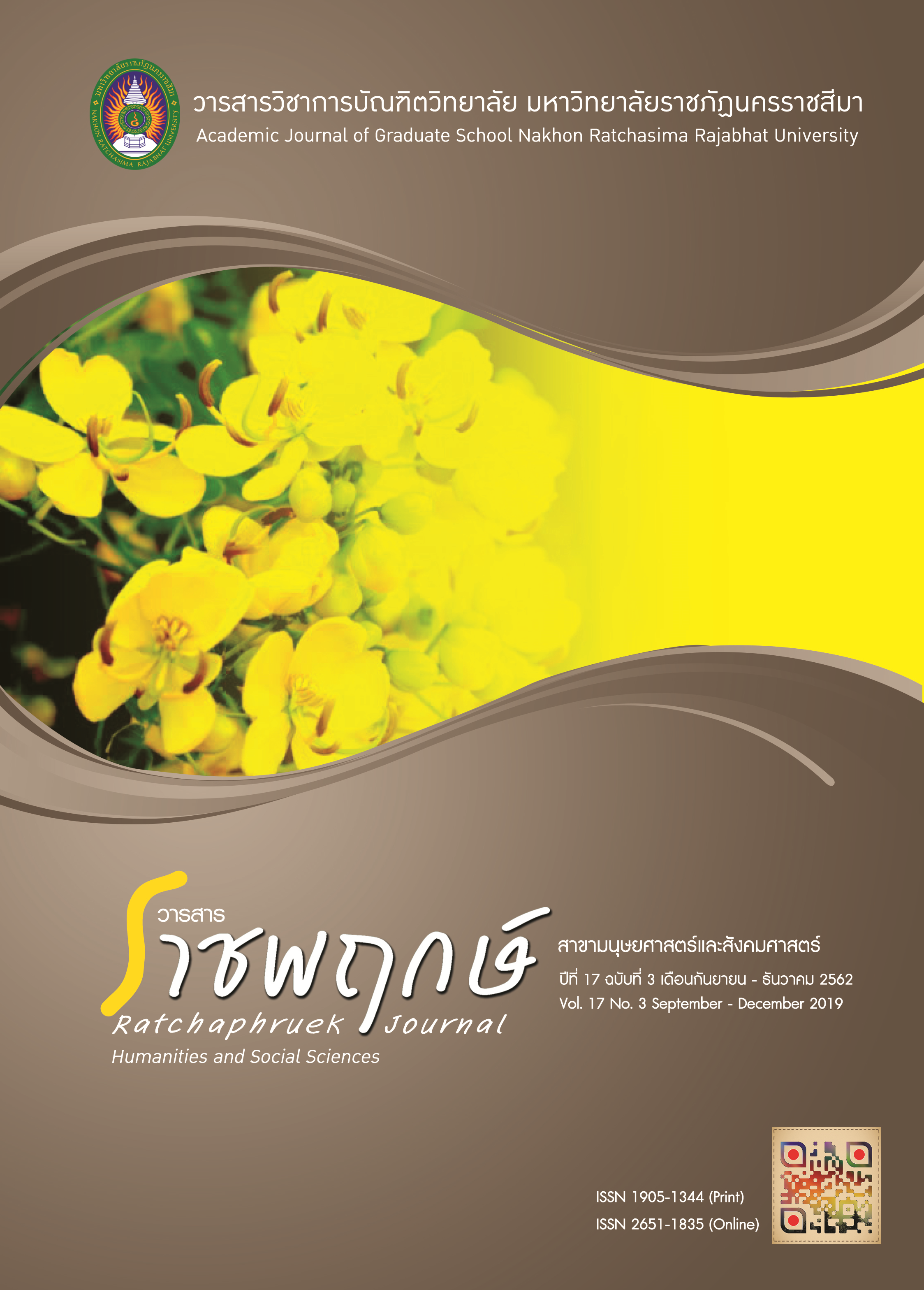The Development of the Screening Tool Toddlers & Young Children at Risk for Autism Spectrum Disorders
Main Article Content
Abstract
The objective of this research was to develop the screening tool in toddlers and young children at risk
for Autism Spectrum Disorders (ASD). The sample of this research were 520 toddlers and young children in
Preschool Child Development Center in Bangkok. Teachers who supervised the children acted as the assessors.
The research instrument was the screening scale in toddlers and young children at risk for Autism Spectrum
Disorders (ASD). the questionnaire was sent to the experts for further verification and confirmation on its
validity of criterion and content. 36 items of questions were concluded and trialed with teachers who supervised
the children acted as the assessors in Preschool Child Development Center in Bangkok. Data collected were
then analyzed to determine the reliability, validity, and Pearson’s correlation coefficient.
The results of this research indicated that the validity of the developed screening scale in toddlers and
young children at risk for Autism Spectrum Disorders (ASD) was between .80 and 1.00. This implied that the
scale quality was acceptable and could be practically used for screening. The reliability () of the screening
scale for both overall and individual aspects, including social communication and social interaction and
behavior and interest were at a very good level ( = .91, .84, and .87, respectively). For the correlation
coefficients between Modified Checklist for Autism in Toddlers (M-CHAT) and the reliability () of the developed
screening scale was .97. This implied that the developed screening scale had very high correlation and could
be practically applied to screen toddlers and young children at risk for Autism Spectrum Disorders (ASD).
Article Details
References
view.asp?id=27771
กุศลาภรณ์ ชัยอุดมสม และคณะ, ผู้แปล. (2562). Modified Checklist for Autism in Toddlers (M-CHAT). สืบค้นเมื่อ 10 กรกฎาคม 2562, สืบค้นจาก https://mchatscreen.
com/wp-content/uploads/2018/05/M-CHAT-R_F_Thai.pdf
ทวีศักดิ์ สิริรัตน์เรขา. (2560). การคัดกรอง สุขภาพจิตเด็กวัยเรียน. กรุงเทพฯ: บียอนด์พับลิสชิ่ง.
พิมพาภรณ์ กลั่นกลิ่น. (2555). การสร้างเสริมสุขภาพเด็กทุกช่วงวัย. กรุงเทพฯ : โรงพิมพ์คลังนานาวิทยา.
สุทธานันท์ กัลป์กะ. (2562). การช่วยเหลือเด็กออทิสติก: กรณีศึกษา. Rama Nurs J 24(3) September-December ; 227 – 238.
The American Psychiatric Association. (2019). คู่มือการวินิจฉัยและสถิติของการเกิดความผิดปกติทางจิต (The Diagnostic and Statistical Manual). Fifth Edition. สืบค้นเมื่อ 11
มิถุนายน2562, สืบค้นจาก https://images.pearsonclinical.com/images/assets/basc-/basc3resources/DSM5_DiagnosticCriteria_AutismSpectrumDisorder.pdf
Hartford, Devon Flora. (2010). A Responsive Teaching Intervention for Parents of Children Identified as at Risk for an Autism Spectrum Disorder at 12 Months.
USA : University of North Carolina at Chapel Hill.
Mayo Clinic Staff. (2019). Autism spectrum disorder. สืบค้นเมื่อ 23 พฤษภาคม 2562, สืบค้นจาก https://www.mayoclinic.org/diseases-conditions/autism-spectrum-
disorder/symptoms-causes/syc-20352928?p=1


